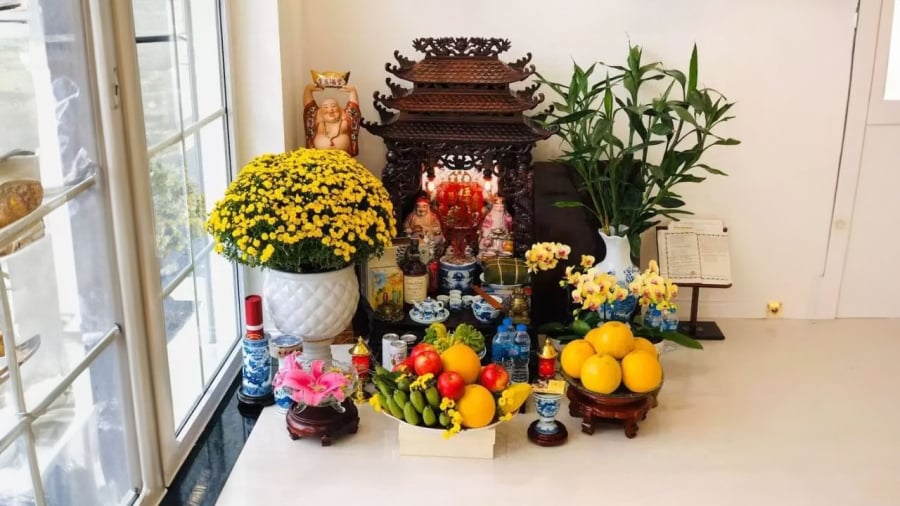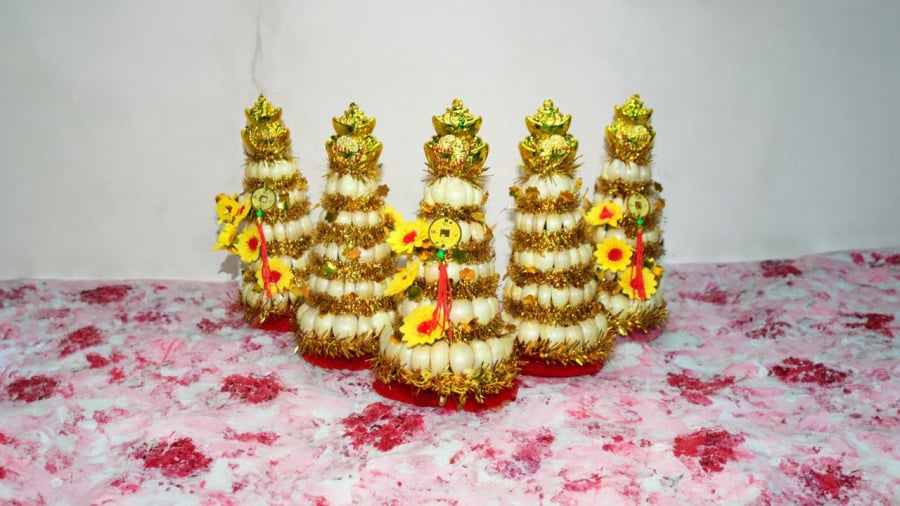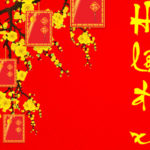Thần Tài is the god who governs the realm of money for the household, attracting wealth and protecting the family’s prosperity. Thần Tài is usually worshipped together with Thổ Địa, both of whom protect the household’s well-being and ward off any negative energies. According to folklore, if one regularly worships Thần Tài during the Canh Ba time, they will receive good fortune and success in their endeavors.
What is Canh Ba?
Canh Ba, according to the ancient time divisions, refers to the period from 11 PM to 1 AM. Why do people offer incense to Thần Tài during this time? Thần Tài works during the day to attract wealth and customers for the household. At night, Thần Tài and Thổ Địa protect the family from negative spirits and energies. Canh Ba is the time when people go to sleep, when yang energy decreases and negative energies start to become active.
Therefore, offering incense to Thần Tài during Canh Ba is considered auspicious, as it helps Thần Tài protect the family’s prosperity, ensuring smooth business and warding off any negative influences or disturbances.

What to offer in worship
Place garlic on the altar: Garlic is an offering placed on the Thần Tài altar. It is not used on the family altar or for Buddhist worship. Garlic has the ability to ward off negative energies. Placing garlic on the Thần Tài altar during Canh Ba adds strength to Thần Tài in repelling malevolent spirits. This also helps the household’s financial and business endeavors flourish, bringing in wealth and prosperity. You can place 3 or 5 garlic bulbs, or simply buy a bunch of garlic and place them on a plate. Make sure the garlic bulbs are firm, not rotten or infested.

Offer the money tree plant: The money tree plant is a type of plant that has positive symbolism in feng shui, bringing financial luck to the family. Offering the money tree plant during worship helps the household encounter favorable financial opportunities and opens up paths for successful business ventures.

Use the money and luck-bringing branches:
Money and luck-bringing branches are branches with fresh green leaves throughout the year. You can place them in a water-filled vase or grow them in soil. However, when placing them on the Thần Tài altar, it is recommended to use a water-filled vase to enhance the water element, attracting better financial luck to the Thần Tài area. You should choose 6, 8, 9, or 10 branches, as these numbers are considered auspicious for wealth and prosperity. Make sure the number of branches corresponds to the vase size so that they can grow well.
It is believed by many to worship Thần Tài and offer incense during Canh Ba. Normally, offerings to Thần Tài should be made in the morning and evening. Especially in the first 100 days after establishing the Thần Tài altar, it is recommended to offer incense every morning to accumulate wealth and fortune. If you regularly offer incense during Canh Ba, it is considered spiritually meaningful. If not, maintain the practice on the full moon day and the 10th day of each lunar month. You can replace the garlic daily, and change the water for the money tree and flowers to keep the vases clean. Avoid leaving withered flowers on the altar. Check the development of the money and luck-bringing branches; if the leaves turn yellow, take them out to recover outside the altar area, and avoid worshiping with withered leaves on the altar.
(*) This information is for reference and personal experience purposes only.
Unveiling the Meaning Behind New Year’s Harvest: Tips for Having Luck in 2021
Celebrating the start of the New Year, many customs and traditions come together in a joyous expression of good fortune. From harvesting the new year’s fortune to praying for fortune and luck, the humanistic meaning behind these practices remains as relevant as ever. But what is the origin and how can we properly partake in the harvest of the new year? Read on to learn more about this fascinating custom.






































